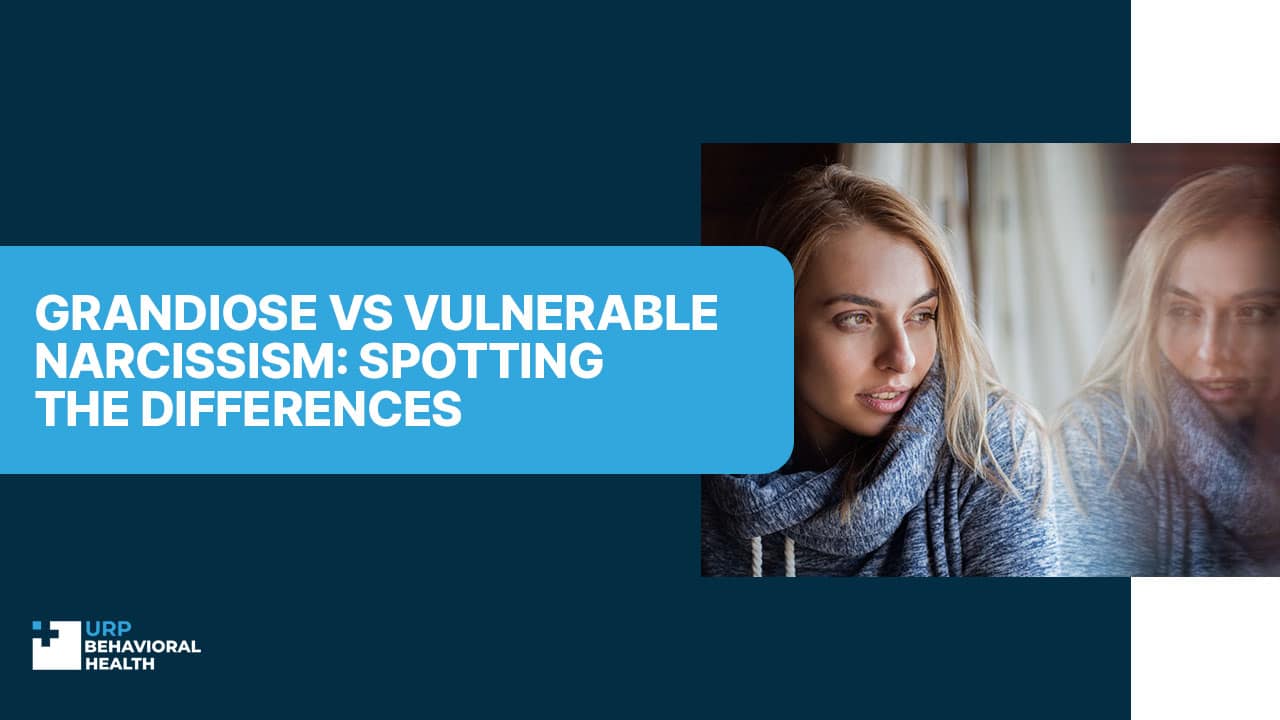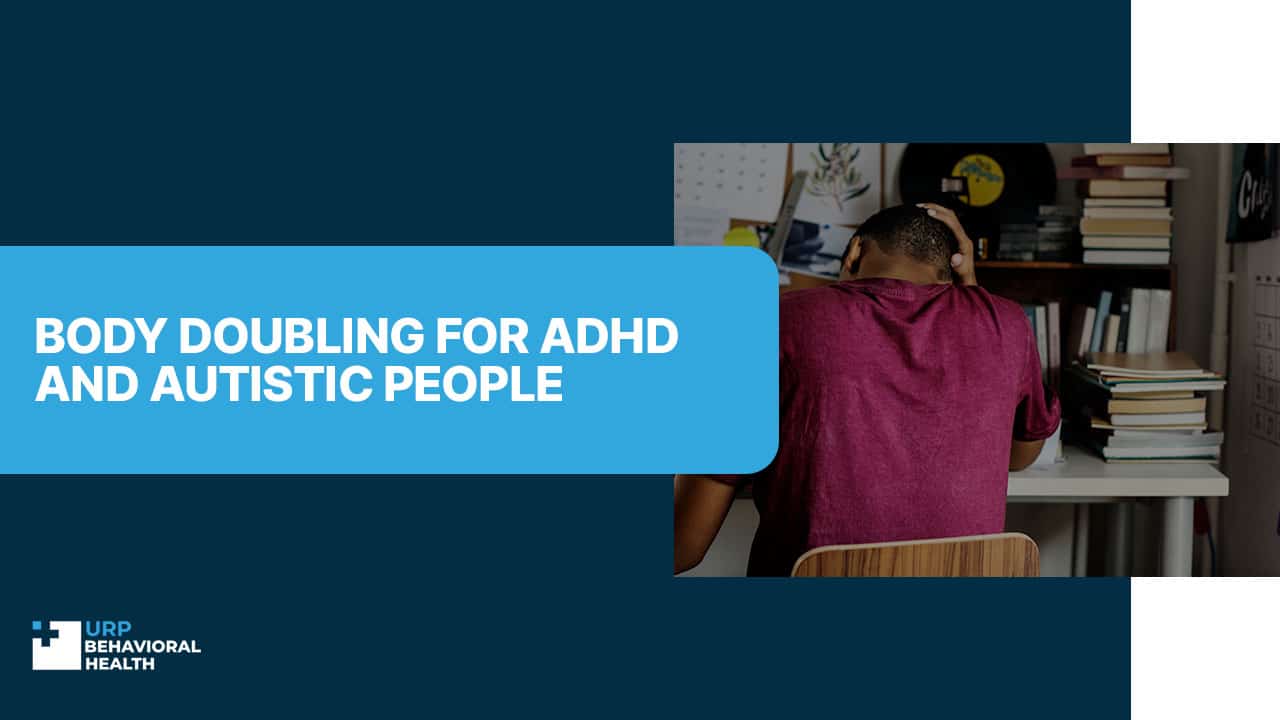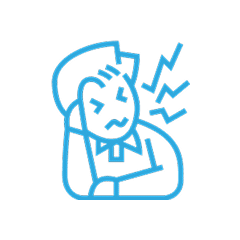
Grandiose vs Vulnerable Narcissism: Spotting the Differences
Though the current Diagnostic and Statistical Manual of Mental Disorders recognizes one formal diagnosis of Narcissistic Personality Disorder [1], scholars offer two NPD subtypes. Self-centeredness is expressed differently among narcissists, making such classification a godsend for a better understanding of narcissistic traits.
We will thoroughly examine two proposed subtypes of NPD: grandiose vs vulnerable narcissism, their core traits, and their impact on personal relations and employment. How are these mental health conditions identified? Read on for the answers!
What Is Grandiose Narcissism?
Grandiose narcissism is an assertive form of NPD characterized by boldness, dominance, entitlement, and superiority [2]. Such people are mostly extraverts, lack empathy, and tend to exploit others for personal gain. They may present to others as boastful and unlikable. This subtype is marked by aggression, arrogance, and a strong need for admiration.
Core Traits and Personality Features
Several characteristics define grandiose narcissists [3]:
- High self-esteem;
- Overconfidence;
- Impulsivity;
- Charisma;
- Authority;
- Antagonism;
- Sense of superiority and entitlement;
- Tendency to exploit others for self-gain;
- Aggression or hostility when challenged;
- Willingness to ignore professional recommendations;
- High risk of making poor decisions;
- Propensity to blame others;
- Self-assuredness in personal judgment;
- Reliance on intuition;
- Immodest boastfulness about individual accomplishments;
- Often taking over leadership positions.
As with other types of NPD, grandiose narcissism can negatively impact social contexts and lead to impairment in occupational performance [1]. If the condition is accompanied by other psychiatric illnesses, such as depression, anorexia, substance use disorders, and the like, it may further worsen independent functioning [4].
Behavioral Patterns in Relationships and Work
Being involved in social interactions with a person high in grandiose narcissism is challenging. The situation becomes more severe if these relationships are personal. Having profound narcissism traits provokes maladaptive behaviors, including manipulativeness, excessive aggression, and lack of empathy, which can lead to dysfunction in interpersonal relationships [5].
Affect on Personal Relationships
The romantic relationship sphere of grandiose narcissists flourishes in its early stage and short-term perspective, including casual dating and sexual affairs [5]. People demonstrating elevated narcissistic traits are more prone to pursue short-term relationships as they can benefit more from their partner this way. High confidence makes them very attractive in the eyes of their potential lover. However, increased conflict and propensity for infidelity can hinder the formation of long-term relationships.
Grandiose narcissists struggle to build stable relationships as it requires heavy commitment and significant emotional investment, while they are prone to reap rewards. Their behaviors may have negative consequences for others, including [6]:
- Using intimate relationships for self-regulation;
- Psychological abuse;
- Lack of commitment and empathy towards a partner;
- Choosing a “trophy partner” to feel dominant and powerful or raise their social status;
- Keeping a partner uncertain about their commitment;
- Seeking admiration;
- Striving to be dominant;
- Attempts to control and manipulate their partner;
- Becoming possessive if they feel deprived of admiration and approval;
- Avoidance of intimacy;
- Switching between narcissistic admiration and rivalry.
Communicating with grandiose narcissists can be arduous and emotionally demanding, regardless of whether these are close relationships or interactions with coworkers.
Impact on Work
These individuals can be socially engaging when they decide to present themselves in such a way. An inflated sense of entitlement induces them to seek control and use manipulative methods to maintain power. Since grandiose narcissists lack social empathy and don’t consider others as separate individuals, they will do what’s necessary to achieve personal goals [3].
Though people with grandiose narcissistic traits seem self-confident and aren’t afraid of taking risks, a number of tendencies and behaviors can pose hazards to the organizations they lead [3]:
- Often seek out positions of leadership in companies;
- Prone to prioritizing their own interests above the collective;
- Have a high potential to earn more, climb the corporate ladder, and build successful careers;
- Have a vision essential for productive leadership;
- Сan be effective when circumstances demand change;
- Narcissistic self-centeredness can jeopardize the organizations they work in;
- Can lie, manipulate, and cheat on others;
- Motivated to seek outcomes that highlight their superiority;
- Can respond with hostility if others don’t admit their grandiosity;
- May engage in questionable working practices and fraud;
- Devalue expert opinions;
- Impulsive in making important decisions;
- Overconfident in their own abilities;
- Can solve intractable challenges.
Grandiose narcissism can cause numerous positive and negative organizational outcomes. Although such individuals tend to overpraise their leadership talents and intelligence, they usually don’t outperform others at work [3].
Our team will verify your insurance and design a plan tailored to your needs.

What Is Vulnerable Narcissism?
Now let’s explore another dimension of NPD, labeled vulnerable or covert narcissism. It is marked by feelings of self-doubt, inadequacy, incompetence, and uncertainty [2]. This NPD subtype reflects a defensive and insecure side of grandiosity [7].
People with traits of vulnerable narcissism might seem hypersensitive, inhibited, and shy. Low tolerance for failure and criticism often makes them socially passive. Covert narcissists tend to overreact emotionally, and their fragile ego makes them more susceptible to affective disorders [1].
Key Characteristics and Emotional Dynamics
Vulnerable narcissism is characterized by [2]:
- Anxiety;
- Fragile self-image;
- Low self-esteem;
- Defensive self-presentation;
- Introverted nature;
- Unempathetic attitude toward others;
- Lack of concern for others;
- Self-absorption;
- Entitlement;
- Exploitative and manipulative tendencies;
- Passive aggression;
- Fear of criticism;
- Ostensible humbleness;
- Hypersensitivity to criticism;
- High neuroticism;
- Constant need for reassurance;
- Expectation of special treatment;
- Acting out the role of victim;
- Dreams of greatness;
- Emotional abuse.
Covert narcissists often seem to be unhappy with their lives. They tend to take things personally and feel unappreciated, misunderstood, and distrustful. This behavioral pattern can be traced within a family, since NPD has a large heritable component [4].
Impact on Relationships and Self-Perception
People with the traits of vulnerable narcissism may have difficulties with forming a distinct self-perception and building meaningful relationships. More on that below.
Influence on Relationships
Despite all their shyness and introversion, people with vulnerable narcissism can be destructive in personal relationships. When their needs are not met, they can feel emptiness, helplessness, and toxic shame. Covert narcissism is often related to attachment anxiety [6].
Here’s what one can expect if engaging in relationships with such an individual [6]:
- Aggressive emotional responses in an attempt to restore control;
- Playing a victim in the relationship to gain attention;
- Consistent demands for signs of the partner’s love;
- Manipulation and self-pity to control others;
- Romantic jealousy [8];
- Hostile blame and discontent if a partner fails to fulfill their expectations;
- Envy of others’ successes and achievements;
- Passive-aggressive tendencies;
- Enhanced emotionality and gloominess.
Covert narcissists often induce their partners and relatives to take responsibility for their well-being at the expense of their own. Such self-sacrifice may leave their close ones feeling exploited, frustrated, and drained. Overall, people with covert narcissistic traits lack positive relationships.
Effect on Self-Perception
As for self-perception, vulnerable narcissism has its hallmark: self-image dissociation [9]. The structure of the self is divided into two parts:
- A positive self-image associated with inflated pride;
- A negative self-image consorted with toxic shame and humiliation.
A risk for self-objectification increases if a person has experienced maltreatment or abuse as a child [9].
Contact our admissions team now to begin your path toward a brighter future.

Grandiose vs Vulnerable Narcissism: Spotting the Differences
Both grandiose and vulnerable narcissism share a core feature of self-centeredness but differ in other constructs [7]. Let’s compare grandiose narcissism vs vulnerable narcissism in terms of key personality traits, emotional regulation, self-esteem, and behaviors in social settings.
Personality Traits Compared Side by Side
Grandiose narcissism and vulnerable narcissism coincide in a sense of superiority, proneness to contempt, and entitlement to special treatment. Grandiose narcissists are emotionally stable extraverts, and vulnerable narcissists are neurotic introverts [2]. Let’s examine key personality traits of both subtypes in more detail:
- Personality type. Grandiose narcissists display more extraverted patterns of behavior. They might seem sociable, active, talkative, and warm. Vulnerable narcissists have more traits of introversion. They are often described as shy, reserved, and mellow.
- Neuroticism. The term covers the extent to which a person perceives the world as threatening and unsafe. Grandiose narcissists feature low neuroticism, while vulnerable individuals have a high degree of neuroticism.
- People with a grandiose type of NPD are primarily focused on promotion, and covert narcissists are driven by an urge to prevent a problem so as not to deal with its consequences later.
- Orientation. While pursuing their goals, grandiose narcissists strive to diminish the distance to a positive object, and representatives of the vulnerable subtype try to increase the gap between themselves and a negative object [10].
Most personality scholars view narcissism types as independent traits, not separate personality disorders [2].
Emotional Regulation and Self-Esteem
NPD variations also differ in terms of emotional management and self-image:
- Grandiose. Typically have good psychological health, high self-esteem, and life satisfaction. They rarely suffer from shame, depression, and anxiety. Grandiose narcissists are predisposed to pride and positive affect.
- On average, covert narcissists feature poor psychological health, low self-esteem, and a deficit of happiness. They show a propensity for depressive disorder and anxiety [2]. Such individuals exhibit low proneness to pride but are inclined to negative affect and shame.
Narcissists of both subtypes are prone to aggression and vengefulness. The narcissistic self is fragile and needs to be perpetually reinforced by others’ validation.
Interpersonal Behaviors and Social Perception
Now, let’s compare vulnerable narcissism vs grandiose narcissism in terms of how these people appear to the eyes of others. In this respect, the difference between grandiose and vulnerable narcissism is defined by their self-views [2]:
- Grandiose. A positive image of self, characteristic of grandiose NPD, impacts their sense of superiority and assertiveness and leads to favorable social positions. Such individuals can tolerate risks and consequently report secure and dismissive attachment styles.
- Negative self-views, intrinsic to a covert type of NPD, lead to a sense of inferiority, submissiveness, and low status attainment. Such people may seem socially awkward and tend to avoid risks, which results in fearful and preoccupied attachment styles.
Overall, grandiose narcissists appear more outgoing and have better social skills than covert narcissists, who are more preoccupied with protecting their status than conquering new heights.
What Is the Difference Between Grandiose and Vulnerable Narcissism?
The distinction between vulnerable and grandiose narcissism is a complex matter as it encompasses several personality traits, self-esteem issues, and interpersonal behaviors. You might have noticed that the image of the grandiose subtype mostly resembles what we are used to when talking about narcissists. Such people are charming, social, confident, able to take risks, and attain leadership positions, which is backed up by high self-esteem.
Vulnerable narcissists often play the victim and are dissatisfied with their lives, which is explained by a sense of low self-worth. These individuals can ultimately drain the resources of their close ones, delegating them the responsibility for their well-being. They usually have poor psychological health and can develop collateral depressive or anxiety disorders.
Can a Narcissist Have Both Vulnerable and Grandiose Narcissism?
Since grandiosity and vulnerability can fluctuate within narcissistic people, one individual can encompass both these components [11]. Let’s see how this issue is documented in the psychological literature.
Psychological Research Findings
Grandiose and vulnerable subtypes occur within all age groups, including kids, adolescents, and adults. According to a clinical theory, people fluctuate in the extent of grandiosity and vulnerability [11]. These volatile patterns give rise to various interpersonal problems.
Current research states that grandiosity is strongly associated with interpersonal dominance and coldness. Colder behavior and social withdrawal are mainly attributed to vulnerability [11]. It proves that these traits are strongly correlated and hang closely together for a narcissistic individual.
Grandiosity and vulnerability are considered “peripheral” dimensions of a narcissistic spectrum. Though a person may not exhibit them simultaneously, grandiose narcissists can experience vulnerability [11].
Clinical Implications of Co-Occurring Traits
Vulnerable narcissism and grandiose subtype feature separate but correlated traits. Grandiosity encompasses feelings of self-importance and entitlement, lack of empathy, exploitative behavior, and emotional manipulation, also present in people with covert narcissism [11]. It is accompanied by high self-esteem and extraversion, while vulnerability is characterized by low self-esteem and introversion.
Grandiose narcissists mainly appear immodest and self-promoting, and vulnerable narcissists tend to avoid shame and embarrassment. As you can see, certain traits can co-occur in two NPD types, but they vary in manifestation.
Reach out today and let us create a treatment plan designed around your needs.

Diagnosis and Assessment
Diagnosing vulnerable vs grandiose narcissism can be challenging due to the presence of overlapping features and collateral psychiatric conditions. Let’s find out how it is done in professional settings and whether self-evaluation tools provide the same accuracy.
How Clinicians Identify Narcissism Subtypes
To get a formal diagnosis of NPD, an individual has to meet certain DSM-5-TR diagnostic criteria [1]. A mental health specialist thoroughly examines their personal history, health information, and mental status. They ensure that no acute psychiatric condition is currently developing.
A clinician may conduct diagnostic interviews and apply professional psychometric tools to research a patient’s personality organization, defenses, interpersonal relationships, and coping skills. A person might need to visit a clinician several times for an accurate diagnosis.
Even if you have evident traits of grandiose, vulnerable narcissism, this formulation won’t be included in the official diagnosis. The DSM-5-TR currently recognizes only one term, narcissistic personality disorder. However, you can ask a mental health practitioner to be more precise and tell you which traits are more prevalent in your case.
Tools for Assessing Grandiose and Vulnerable Narcissism
Different structured instruments can assist mental health professionals in evaluating NPD. Self-report questionnaires and inventories commonly take into account both grandiose and vulnerable traits.
Grandiose narcissism can be identified with the help of the Narcissistic Personality Inventory and the Narcissistic Admiration and Rivalry Questionnaire. The Hypersensitive Narcissism Scale and the Narcissistic Vulnerability Scale cover covert narcissism [2]. You can find a comprehensive overview of these tools in our article “Narcissism Test: How to Identify Traits and What They Mean.”
Treatment and Coping Strategies
Though treatment of narcissistic individuals is largely hindered by their urge to dominate others and difficulty recognising existing problems, several therapeutic approaches can help patients with NPD. Let’s delve more into the topic to see how clinicians handle this complex mental health condition.
Treatment for NPD
Treatment for narcissistic personality disorder commonly encompasses [12]:
- Though currently there is no verified medication designed specifically for NPD, a psychiatrist can prescribe certain remedies to mitigate the symptoms of co-existing mood disorders, such as depression and anxiety.
- Talk therapy with a mental health expert can help a person with NPD understand their maladaptive patterns and treat others more favorably.
Several psychotherapeutic approaches have proven useful for patients with NPD, for example:
- Cognitive behavioral therapy. CBT examines negative thoughts, dysfunctional beliefs, and unhealthy suggestions to alleviate intense psychological distress.
- Dialectical Behavioral Therapy. DBT encompasses cognitive-behavioral techniques with effective mindfulness practices, promoting better emotional regulation and interpersonal interactions.
- Transference-Focused Psychotherapy. During a TFP therapy session, a person can explore how their relationships unfold in real life.
- Schema Therapy. This innovative approach enables a narcissistic individual to identify the causes of maladaptive thought patterns and replace them with healthy ones.
- Solution-Focused Brief Therapy. Therapists specializing in SFBT can help narcissistic patients set specific objectives and identify beneficial skills to achieve them.
- Group Therapy. This therapeutic format is aimed at addressing steady relational patterns. Narcissistic individuals can improve their interpersonal skills and model healthy communication behaviors.
- Family Therapy. It can help family members deepen their knowledge of the psychiatric disorder and favorably affect family dynamics [13].
An individual with narcissistic personality disorder has to be genuinely committed and interested in treatment to foster positive changes. Around 63%–64% of such patients drop out of psychotherapy [13].
Strategies to Handle Relationships With a Narcissist
Given that nearly 5% of the U.S. population may suffer from NPD [12], there’s a high possibility of interacting with a narcissist in daily life. Learn several coping strategies to protect your psychological well-being from emotional turmoil while communicating with a narcissistic individual:
- Maintain firm boundaries. Identify your limits and prioritize your needs while setting personal boundaries with a narcissist. You should consistently strengthen them, as the other party usually prefers to ignore things you don’t tolerate. Communicate clearly and use “I” statements to assert your comfort while interacting with a narcissist.
- Mute your emotional reactions. Emotional detachment is vital since narcissists tend to provoke others. They feel satisfaction and delight when their attempts to put you out of temper appear successful. Try to process your emotions outside of interactions with a narcissistic individual so as not to nurture the devastating bond.
- Withstand manipulations. People with NPD are masters of various manipulation tactics, such as love bombing, gaslighting, or, in the case of covert narcissists, playing the victim. Educate yourself about these strategies to better resist them.
- Never engage in arguments. Narcissists like to dominate, so they will try to drag you into a conflict. Stay away from direct confrontation and don’t waste your resources on earning their approval.
- Prioritize self-care. It’s vital to replenish your emotional reserves if you have to deal with a narcissist. Incorporate self-care activities into your daily routine, such as physical exercises, walking, meditation, communication with trusted friends, or hobbies that bring you joy.
Don’t play a savior, and remember that you can’t change the narcissist. Aim to take care of your mental health instead. Even if they are willing to change, it will prove successful with professional assistance and long-term commitment to the therapeutic process.
We’ll help you understand your options and guide you toward care.
Conclusion
Grandiose and vulnerable narcissism are two subtypes of NPD, differentiated by distinct traits and stable behavioral patterns. Grandiose narcissists are charming, bold, and confident, while vulnerable narcissists are insecure, cautious, and socially clumsy [2]. People of both types are self-centered, lack empathy, and can exploit others to their own advantage.
While a mental health professional can diagnose NPD without specifying its subtype, it is beneficial to increase awareness about narcissism, grandiose and vulnerable. This can help a person better understand their personality features and outline concerns to a mental health practitioner. Self-assessment tools can be used for educational purposes, but only a licensed clinician can diagnose NPD and develop an appropriate treatment plan for you.
References:
- Paroma Mitra, Tyler J. Torrico, Dimy Fluyau. Link: https://www.ncbi.nlm.nih.gov/books/NBK556001/. Access date: September 23, 2025.
- Nikhila Mahadevan. Conceptualizing grandiose and vulnerable narcissism as alternative status-seeking strategies: Insights from hierometer theory. Link: https://compass.onlinelibrary.wiley.com/doi/full/10.1111/spc3.12977. Access date: September 23, 2025.
- Charles A. O’Reilly, Nicholas Hall. Grandiose narcissists and decision making: Impulsive, overconfident, and skeptical of experts–but seldom in doubt. Personality and Individual Differences. August 14, 2020. Link: https://pmc.ncbi.nlm.nih.gov/articles/PMC7427600/#:~:text=A%20substantial%20body%20of%20research,hostility%20and%20aggression%20when%20challenged. Access date: September 23, 2025.
- Mark Zimmerman for MSD Manual. Narcissistic Personality Disorder (NPD). September 2023. Link: https://www.msdmanuals.com/professional/psychiatric-disorders/personality-disorders/narcissistic-personality-disorder-npd#:~:text=small%20(2).-,Comorbidities%20are%20common.,those%20with%20either%20disorder%20alone. Access date: September 23, 2025.
- Alissa Lopez. Narcissism and relationship satisfaction: the impact of grandiose and vulnerable narcissism on relationship duration. August 2024. Link: https://twu-ir.tdl.org/server/api/core/bitstreams/d227531d-2530-4c34-8151-cb229435653e/content. Access date: September 23, 2025.
- Bojana M. Dinić, Anđelka Jovanović. Shades of narcissistic love: Relations between narcissism dimensions and love styles. Personality and Individual Differences. Volume 175, June 2021. Link: https://www.sciencedirect.com/science/article/abs/pii/S0191886921000829. Access date: September 23, 2025.
- Joshua D. Miller et al. Grandiose and Vulnerable Narcissism: A Nomological Network Analysis. Link: https://scispace.com/pdf/grandiose-and-vulnerable-narcissism-a-nomological-network-233i7wh19v.pdf. Access date: September 23, 2025.
- Lucia Ponti, Simon Ghinassi, Franca Tani. The Role of Vulnerable and Grandiose Narcissism in Psychological Perpetrated Abuse Within Couple Relationships: The Mediating Role of Romantic Jealousy. Journal of Psychology Research. 2020; 154 (2): 144–158. Link: https://pubmed.ncbi.nlm.nih.gov/31652110/. Access date: September 23, 2025.
- Anat Talmon, Karni Ginzburg. The Intricate Role of Dissociation in the Relations Between Childhood Maltreatment, Self-Objectification, and Narcissism. Psychological Trauma: Theory, Research, Practice, and Policy. 11(8); March 2019. Link: https://www.researchgate.net/publication/331947678_The_Intricate_Role_of_Dissociation_in_the_Relations_Between_Childhood_Maltreatment_Self-Objectification_and_Narcissism. Access date: September 23, 2025.
- Ravit Nussinson et al. Approach/Avoidance Orientations Affect Self-Construal and Identification with In-group. Self Identity. September 15, 2011; 11(2): 255–272. Link: https://pmc.ncbi.nlm.nih.gov/articles/PMC3405357/. Access date: September 25, 2025.
- Elizabeth A. Edershile, Aidan GC Wright. Grandiose and Vulnerable Narcissistic States in Interpersonal Situations. Self Identity. June 11, 2019; 20 (2): 165–181. Link: https://pmc.ncbi.nlm.nih.gov/articles/PMC7953573/. Access date: September 25, 2025.
- Harvard Health Publishing. Narcissistic personality disorder: Symptoms, diagnosis, and treatments. January 8, 2024. Link: https://www.health.harvard.edu/mind-and-mood/narcissistic-personality-disorder-symptoms-diagnosis-and-treatments. Access date: September 23, 2025.
- Igor Weinberg, Elsa Ronningstam. Narcissistic Personality Disorder: Progress in Understanding and Treatment. Focus (American Psychiatry Publishing). October 25, 2022; 20(4): 368–377. Link: https://pmc.ncbi.nlm.nih.gov/articles/PMC10187400/. Access date: September 26, 2025.
















